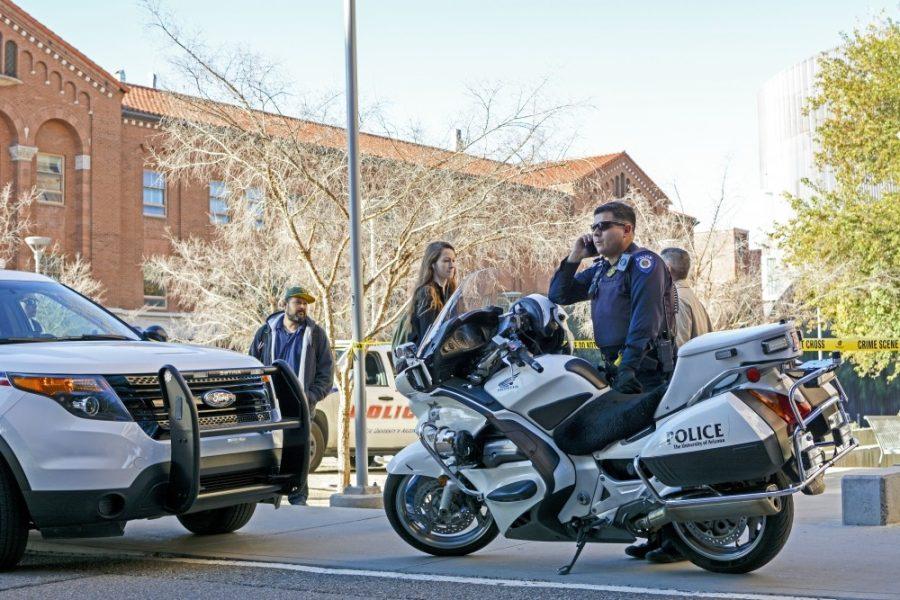Drivers making their daily commute on Wednesday, Feb. 7, got a taste of a new traffic initiative as the University of Arizona Police Department rolled out its Community Awareness through Traffic Safety program.
According to Rene Hernandez, public information officer for UAPD, CATS was launched by the department a little over a year ago with hopes of making campus a safer place.
“CATS is a traffic initiative,” Hernandez said. “This is where we’re going to go out and try to alter behaviors of drivers, pedestrians and bicyclists in and around the University of Arizona campus.”
Police looked to enforce the speed limit and made sure cars stopped at red lights. Bicyclists and pedestrians were also scrutinized for using the crosswalk incorrectly.
RELATED: POLICE BEAT 02/05/18: Doggone Double Trouble
“We basically wanted to make our community safer around the University of Arizona,” Hernandez said. “We have a large population of students, faculty and staff that walk and bike to school. And we wanted to go out and teach good habits, instead of letting bad habits form.”
The department’s areas of concern are the stretches of Sixth Street and Speedway Boulevard between Euclid Avenue and Campbell Avenue.
The next CATS date is scheduled for Feb. 21 on the Speedway Boulevard stretch.
“We try to do two days a month, and we generally try to do them on heavy traffic flow. Dates vary, but times are normally in between 7 a.m. and 10 a.m.,” Hernandez said.
Usually a campus announcement is sent out prior. This lets students and faculty know when CATS is occurring so they can be aware of it.
“On average, we have about five to six officers from our motor unit go out for that three-hour period,” he said. “We normally get about 40 stops.”
The department has also recently acquired a new e-ticket writer called Thin Blue Line, which is used to speed up the paperwork done when pulling someone over.
“Before we had to handwrite all of our tickets and all of our warnings, and that took a lot of time — 10 to 15 minutes per stop,” Hernandez said. “Now we have the ability of scanning licenses and everything gets auto-populated into a printer and it just prints out.“
The device allows the department to be more efficient and reach more people in their goal to make the campus safer.
Thin Blue Line is still currently in its testing phase, but if the department likes it, they intend to purchase the program for other motor officers.
The program also benefits those pulled over.
“Normally when people are speeding, it’s because they’re late to something, or something’s going on,” Hernandez said. “So instead of having to wait an extra 15 minutes for them to write a ticket, it makes it more efficient for officers to get their contact with the individual.”
RELATED: POLICE BEAT 01/29/18: Jeepers, a Creeper!
The program was made to educate and give warnings. However, if a criminal infraction is committed, the police will write a ticket or even impound the vehicle.
“We will follow all of the laws in Arizona, and one of the statutes states that if you are driving with a suspended license, your vehicle has to be impounded until you get your license reinstated by the department of motor vehicles,” Hernandez said.
Since the start of the program in January, two vehicles have been impounded.
The police department is always looking for ways to broaden their communication with students, faculty and staff at the university. They hold brown-bag lunches, open seminars and an event called Coffee with a Cop throughout the year.
“The goal is to educate and let them know what’s going on,” Hernandez said.
Follow Zach Ogden on Twitter








